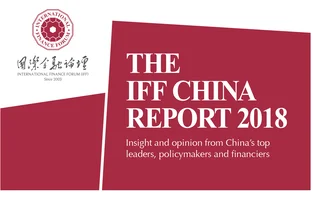
Five risks of the BRI
Han Seung-soo, co-chair of the IFF and former prime minister of the Republic of Korea, frames five of the major risks facing the Belt and Road Initiative, and discusses what should be done to negate them and the potential consequences of failing to do so


Geopolitical risks
The Belt and Road Initiative (BRI) should be inclusive, not exclusive, and not only towards Asian countries but also other regions in the Americas and Africa. Transportation is vital to society, exemplified by the fact that the Silk Route has been functioning since horses and camels were the only means of transportation. Inclusivity in the BRI is therefore imperative. An ideal starting point for widening this inclusivity could be to engage Japan – which is interested in joining the BRI, according to its prime minister – as well as the Republic of Korea, which, if a railway can be established to connect it to North Korea, has ambitions of establishing a starting point to the route along the BRI on the Korean Peninsula. The involvement of Japan and the Republic of Korea would be mutually beneficial.

Geo-economic risks
The second risk is related to the current global trends of globalisation and free trade. These trends are becoming ‘bad words’, but humanity will prosper if these two ideals continue to develop, and so the BRI should promote their development.
Technological risks
The Silk Road Economic Belt covers a heterogeneous region in terms of technological advancement – some countries along its route are technologically advanced, and othes are not. There are relatively advanced countries – such as China – and technologically limited ones in the Middle East and Central Asia. It is imperative to the success of the BRI that the technological gap in this region is narrowed.
The risk of neglecting the people
During periods of economic development, material possession is prioritised over the needs and desires of the people. This narrative must change – the people should be the priority in any economic development that will acompany the BRI.
Renminbi currency risk
The importance of the renminbi is well understood – it is now part of the International Monetary Fund’s Special Drawing Right basket. However, if renminbi is used to fund the BRI outside of China, it will come up against limitations, the most important of which is the attitude of the Chinese government. It was announced at the 19th National Congress of the Communist Party of China that the country is worried about the amount of outbound investment. If China makes an effort to limit foreign investment, naturally the BRI will suffer.
Only users who have a paid subscription or are part of a corporate subscription are able to print or copy content.
To access these options, along with all other subscription benefits, please contact info@centralbanking.com or view our subscription options here: subscriptions.centralbanking.com/subscribe
You are currently unable to print this content. Please contact info@centralbanking.com to find out more.
You are currently unable to copy this content. Please contact info@centralbanking.com to find out more.
Copyright Infopro Digital Limited. All rights reserved.
As outlined in our terms and conditions, https://www.infopro-digital.com/terms-and-conditions/subscriptions/ (point 2.4), printing is limited to a single copy.
If you would like to purchase additional rights please email info@centralbanking.com test test test
Copyright Infopro Digital Limited. All rights reserved.
You may share this content using our article tools. As outlined in our terms and conditions, https://www.infopro-digital.com/terms-and-conditions/subscriptions/ (clause 2.4), an Authorised User may only make one copy of the materials for their own personal use. You must also comply with the restrictions in clause 2.5.
If you would like to purchase additional rights please email info@centralbanking.com test test test







